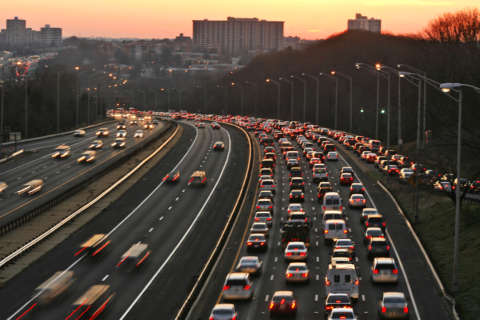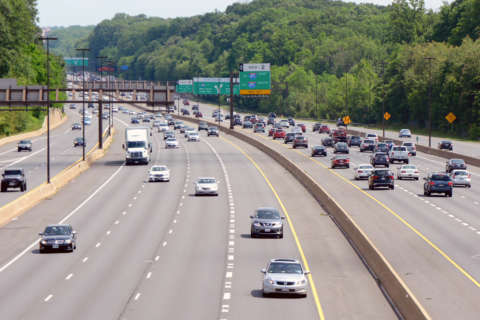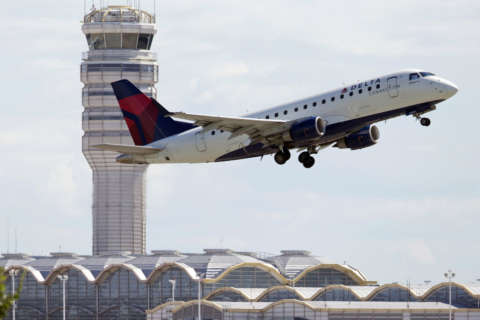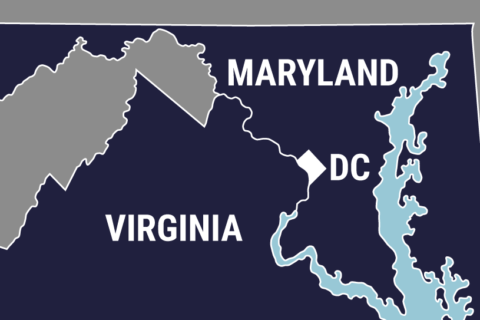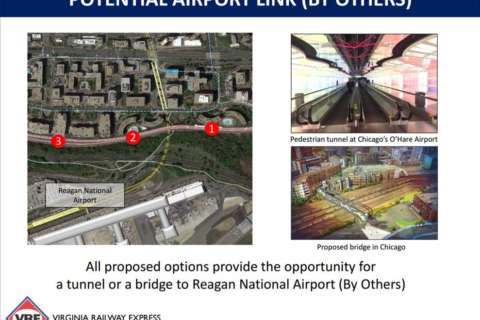WASHINGTON — Toll lanes could blanket the region’s highway; more roads could have reversible rush hour lanes; new bus-only lanes could be built, and Metro or the yet-to-be-built Purple Line could be extended — they’re all ideas from a regional long-range planning task force for massive regional changes that would be great if money were no object.
The 10 initiatives were proposed by the Long Range Plan Task Force of the Transportation Planning Board, part of the Metropolitan Washington Council of Governments. They include a new Potomac River bridge somewhere north of the Legion Bridge — the best known of the proposals, due to the strong support from some Loudoun County leaders and the strong opposition from Montgomery County.
The task force proposals, which are due to move into further review Wednesday, also include rebuilding the Legion Bridge, a new Metro line through downtown D.C., Metro fare discounts for some riders, and policy changes aimed at encouraging carpooling that could include significantly raising the price of parking in some areas.
The toll lane expansion could cover much of U.S. 50, Interstate 270 and the entire Capital Beltway. It could even add toll access to the Dulles Access Highway in the middle of the Dulles Toll Road.
The Transportation Planning Board is due to vote Wednesday to review these plans for potential impacts and rough cost estimates. Many of the ideas may face challenges getting funding or political support.
A memo summarizing the task force’s work read that they didn’t consider political or financial viability at this stage because so far “the task force is proposing initiatives for further analysis, not for inclusion in the long-range plan. Some of the initiatives generated significant controversy among task force members, but the task force concluded that it was important for them to be analyzed given that the ideas are worthy of further analysis to assess whether they hold potential to produce noticeable improvements in the region.”
Some of the ideas listed have been considered in the past, and could cost billions of dollars each. A final report is due by December.
“This information together with other considerations such as the viability (including funding and support from stakeholders and decision makers) will inform the TPB’s future discussion and action in December as to whether any of the initiatives should be endorsed for inclusion into the aspirational element of the region’s Long-Range Transportation Plan,” the memo read.
The region’s regular transportation plans are limited by reasonably expected future funding. Those plans generally compile projects Maryland, Virginia or D.C. each actually plan to build in coming years.
The projects included in the task force’s proposal:
- Regional Express Travel Network (Toll lanes such as the 95 and 495 Express Lanes; similar lanes are also coming to Interstate 66 and Interstate 395 in Virginia)
- “Express toll lanes network (free to HOV and transit) with added lanes where feasible on existing limited access highways (including remaining portion of the Capital Beltway, I-270, Dulles Toll Road, U.S. 50); includes expanded American Legion Bridge”
- “New express bus services on network (paid in part through tolls) connecting major Activity Centers”
- Regional Congestion Hotspot Relief Program
- Use technology such as traffic lights on highway on-ramps to meter traffic, overhead signs to direct drivers to slow down ahead of traffic jams or to move out of blocked lanes, and improved travel information and signal timing
- In targeted congestion hot spots, add lanes or improve intersections and interchanges
- Add “reversible lanes on major roadways, as appropriate (to be identified based on strong directional flows)”
- Expand regional incident management
- Integrate paratransit services with technology upgrades to “improve mobility of traditionally underserved populations”
- Additional Northern Bridge Crossing / Corridor
- New northern bridge crossing of Potomac River (north of the Legion Bridge)
- New express bus services connecting existing Activity Centers in this multimodal corridor
- Regionwide High Capacity Transitways (dedicated lanes for buses, streetcars or light rail vehicles such as the Metroway bus rapid transit system running in Alexandria and Arlington)
- Build bus rapid transit or other “high-capacity transit networks” with dedicated space in Montgomery County, Prince George’s County, Northern Virginia and D.C.
- Build a transitway from Branch Ave. Metro to Waldorf
- Make it easier to access transit stations
- Regional Commuter Rail Enhancements
- Grow VRE and MARC service, including some trains running through from Maryland to Virginia, longer hours, and more lines running all day rather than just in the rush-hour direction
- Expand the Long Bridge to include at least four tracks and a way to walk or bike between Arlington and D.C. as part of larger improvements in the corridor
- Make it easier to access rail stations
- Metrorail Regional Core Capacity Improvements
- Fund the power upgrades needed for Metro to run all eight-car trains
- Ease crowding at the busiest stations downtown by funding station improvements
- Build a second Rosslyn station that would separate Blue Line trains from the Orange and Silver Line, allowing more service on the Orange and Silver Lines
- Build a new Metro line downtown that would connect to the second Rosslyn station through a new Rosslyn tunnel. The line would run from Rosslyn through Georgetown, Union Station and the southwest Waterfront.
- Make it easier to access Metro stations
- Transit rail extensions
- Metrorail extensions to Centreville/Gainesville (Orange Line), Hybla Valley/Potomac Mills (Yellow Line)
- Can consider a Maryland extension north of Shady Grove toward Frederick (Red Line) or south of Branch Ave. to National Harbor (Green Line)
- Purple Line extension across the Potomac to Tysons (west) and Eisenhower Avenue (east). The Purple Line state rail project from Bethesda to New Carrollton is currently held up in a legal fight that Maryland says has put the project in jeopardy.
- Make it easier to access rail stations
- Optimize regional land use
- While not a specific project, the goal of balancing jobs and housing across the region could make better use of the existing transportation system by cutting down on the number of people all trying to go the same way at the same time.
- Optimize jobs/housing balance regionwide
- Increase jobs and housing around underutilized rail stations and Activity Centers with high-capacity transit.
- Build more housing in the region to match employment (about 130,000 more households)
- Transit Fare Policy Changes
- Reduced price Metrorail fare for off-peak direction during peak period and on underutilized segments
- Free transit for low-income residents
- More intensive efforts to cut down on rush-hour traffic by limiting the number of people driving alone
- Policies could require companies to cut down on the number of workers driving alone or offer financial incentives
- Could include payments for using less parking, expanding transit/vanpool benefits for workers, expanding telework and flexible schedules or a “substantial increase” in the price of commuter parking in areas where transit or carpools are likely to be an option

